General information on Raia’s tomb
Like Paser’s tomb, the small chapel of Raia was found in 1981. Raia was Chief of Singers in the temple of the Memphite town-god, Ptah. There is a possibility that he is identical to a musician depicted on a stela from Abydos in Upper-Egypt (now in Liverpool). In that case, he will have made a pilgrimage to that sacred city of the god Osiris. Otherwise, Raia and his wife Mutemwia are unknown from other monuments. Since his chapel was built right against the south exterior wall of Paser, he may have been a relative of the Tjunery family.
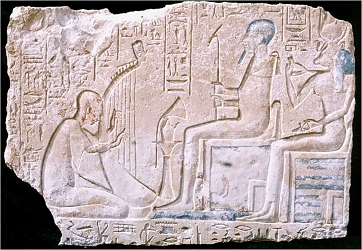
Superstructure of Raia’s tomb
Raia’s monument merely consists of a forecourt (doubtless enclosed by a mud-brick wall but now almost completely open) and a small offering-chapel of 1.50 x 1.80 m. The latter is built in limestone orthostats with relief decoration on the inner faces; there must have been an exterior wall, perhaps again constructed in mudbrick.
The chapel has an open front with two small columns almost blocking the doorway. The reliefs represent a burial procession on the south wall and an offering scene on the north wall. The west wall is occupied by a stela flanked by two large figures of the deceased. An interesting scene on the south wall depicts Raia playing the harp before the Memphite gods Ptah and Hathor. A number of singers accompanying the burial procession clearly represent Raia’s colleagues of the temple choir.
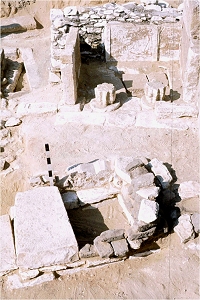
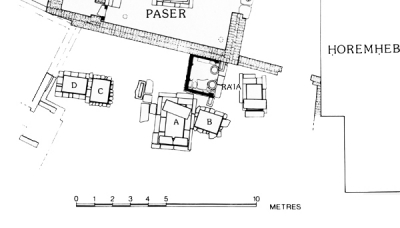
Substructure of Raia’s tomb
The shaft in the forecourt is only 4.48 m deep. It gives access to two chambers, one in the north and one in the south. Two inscribed shabtis and a fragment of a third are all that remains of the burial gifts.
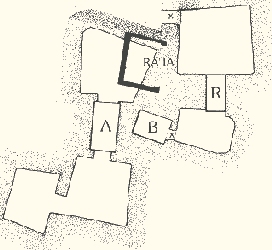
Most interesting finds from Raia’s tomb
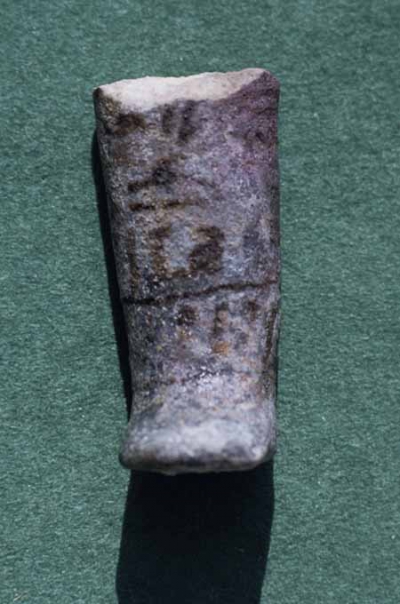 Shabtis
Shabtis
Raia and his wife were buried in rock-cut chambers at the bottom of the 4.5 m deep shaft in front of the chapel. This had been entered by robbers long ago. All that was left of Raia’s funerary equipment were two faience shabtis found in the underground chambers and a part of a shabti in the vicinity of his tomb (see photo). These show the tomb-owner as a mummy with a striated tripartite wig. The arms are crossed over the chest and the hands hold hoes and a sandbag. Thus the figurines are ready to take Raia’s place when the latter was called for menial labour in the hereafter. The text inscribed in one column on the back and four lines over the front and sides is derived from Book of the Dead spell 6. This addresses the shabtis in order to cause them to work on behalf of their owner, the overseer of singers of Ptah Raia. The pale green colour with purple details is characteristic for the early 19th Dynasty.
Raia’s Family Relations
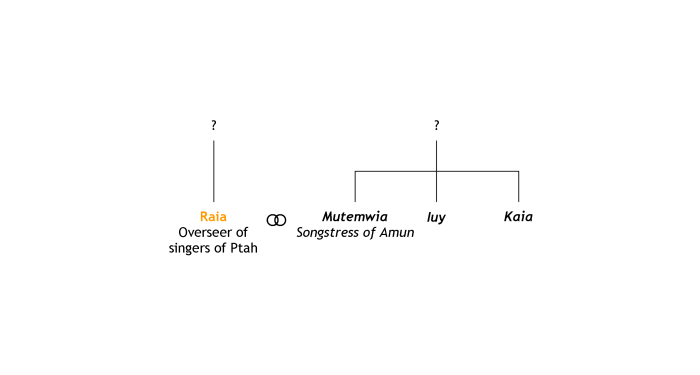
Objects from Raia’s tomb in museum collections
-
- Leiden, RMO F 1987/3.3: shabti fragment of Raia, faience [Paser and Raia, pl. 34.41]
Bibliography
Final report:
Martin, G.T., et al., The Tomb-chapels of Paser and Ra’ia at Saqqara (London, 1985).
Restoration
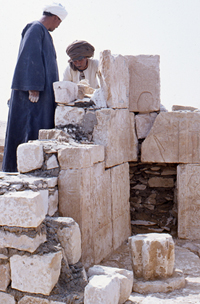 Immediately after its excavation in 1981, the chapel of Raia was restored. Several loose relief blocks were re-erected in their original position. A new limestone wall was built around the orthostats bearing the relief decoration of the chapel. This modern wall was plastered on the outside and carries a roof of wooden planks with a layer of concrete on top. The entrance of the chapel is secured by an iron door which is kept locked. No further interventions have been carried out during the 2004-2008 conservation project.
Immediately after its excavation in 1981, the chapel of Raia was restored. Several loose relief blocks were re-erected in their original position. A new limestone wall was built around the orthostats bearing the relief decoration of the chapel. This modern wall was plastered on the outside and carries a roof of wooden planks with a layer of concrete on top. The entrance of the chapel is secured by an iron door which is kept locked. No further interventions have been carried out during the 2004-2008 conservation project.
